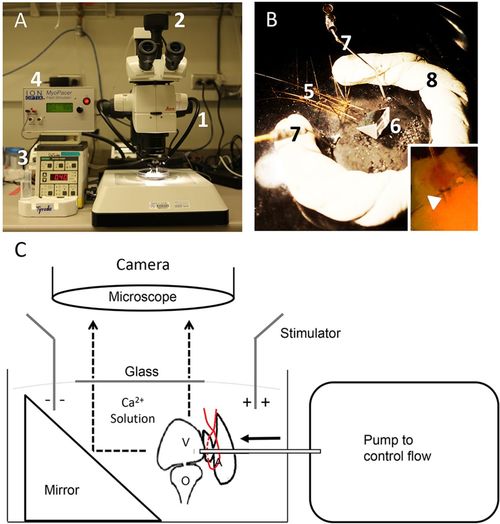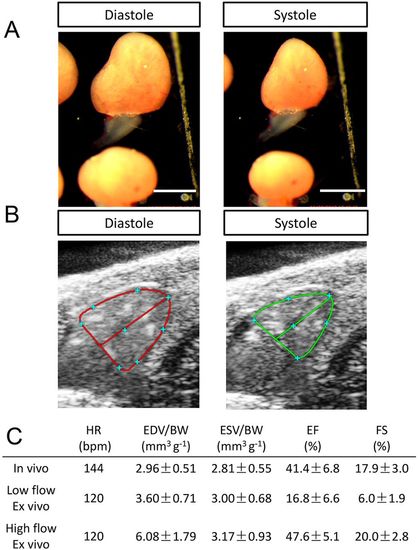- Title
-
A Langendorff-like system to quantify cardiac pump function in adult zebrafish
- Authors
- Zhang, H., Dvornikov, A.V., Huttner, I.G., Ma, X., Santiago, C.F., Fatkin, D., Xu, X.
- Source
- Full text @ Dis. Model. Mech.
|
Setup of an ex vivo system for an isolated zebrafish heart. (A) Equipment needed, including a dissecting microscope (1), with a camera (2), pump (3) and stimulator (4). (B) Two-line 34G catheters (5) are placed on a Sylgard-coated Petri dish with the use of insect pins; 2 hearts are tied on the ends of the catheters (inset depicts the position of a cannula in the heart; arrowhead points to the place of the tie by the atrioventricular junction), which are put in front of a mirror (6); platinum electrodes (7) are used for electrical field stimulation. A pool (8) was made to control the solution level. (C) Diagram of the perfusion system. |
|
Comparison of cardiac function measurements obtained from the ex vivo method and from in vivo HFE. (A) Representative images of adult hearts at end-diastolic and end-systolic phases of cardiac cycle ex vivo. Scale bar: 1 mm. (B) Representative echocardiographic images of adult fish hearts at end-diastolic and end-systolic phases in vivo. (C) Parameters of the same group of 20 fish obtained from either HFE or ex vivo assay at low and high load. HR, heart rate; bpm, beats per minute. |


